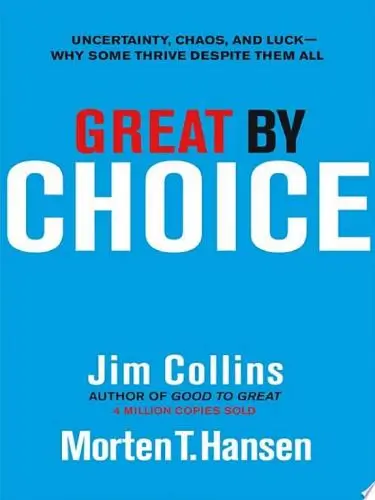Radical Candor
How to Get What You Want by Saying What You Mean
What's it about?
Radical Candor is a guide to effective leadership that emphasizes the importance of both caring personally and challenging directly. Scott introduces the concept of radical candor, which involves providing honest feedback while also showing genuine concern for the individual. This book provides practical advice on how to cultivate a culture of open communication and constructive criticism within your team, ultimately leading to improved relationships and better results. If you want to become a more effective leader and create a more positive work environment, this book is a must-read.
About the Author
Kim Scott is an award-winning Australian author known for his powerful exploration of Indigenous culture and identity. His novel "That Deadman Dance" beautifully intertwines historical events with vivid storytelling, while "Taboo" delves into the complexities of family, community, and reconciliation. Scott's lyrical prose and unique perspectives offer readers a profound glimpse into the rich tapestry of Australian Indigenous experiences.
10 Key Ideas of Radical Candor
Cultivate Personal Relationships to Foster Open Communication
Building strong personal relationships within your team is crucial.
It creates a foundation of trust and understanding, making it easier for team members to accept and give candid feedback.
When people know they are valued beyond their professional contributions, they're more likely to be open and less defensive.
This involves taking the time to get to know your team members on a personal level, understanding their aspirations, fears, and what motivates them.
Such an environment encourages transparency and honesty, essential components of effective communication.
Learn DeeperSchedule Regular One-on-One Meetings: Make it a priority to have frequent, dedicated time with each team member. Use this as an opportunity to discuss not just work-related topics but also personal interests, goals, and concerns. This helps in building a rapport and understanding each other beyond professional roles.
Share Your Own Experiences and Vulnerabilities: Lead by example. When you open up about your own challenges, aspirations, and learnings, it sets a tone of trust and openness. It encourages others to share their own stories and views, fostering a culture of mutual respect and understanding.
Create Informal Social Gatherings: Organize team lunches, coffee breaks, or virtual hangouts if working remotely. These less formal settings can encourage more personal conversations and strengthen bonds among team members, making it easier to communicate openly during work.
Encourage Peer-to-Peer Recognition: Implement a system where team members can acknowledge each other's contributions and strengths. This not only boosts morale but also helps in recognizing the value each person brings to the team, beyond just their work output.
- Example
During a one-on-one meeting, a manager learns that one of their team members is passionate about environmental conservation. The manager then connects this interest to a project the team is working on, which involves developing eco-friendly products, thereby aligning the team member's personal values with their work.
- Example
A team leader shares a story in a team meeting about a mistake they made early in their career and how it taught them the importance of transparency and asking for help. This encourages a culture where mistakes are seen as learning opportunities rather than failures, making team members more comfortable sharing their own challenges.
Embrace Directness with Compassion for Effective Feedback
Being direct doesn't mean being harsh or insensitive.
Combining directness with compassion means you care personally about the individual while challenging them directly.
This approach ensures that feedback is clear and actionable without being hurtful.
It's about respecting the individual enough to tell them what they need to hear in a way that shows you're on their side.
This balance helps in fostering a culture where feedback is seen as a tool for growth rather than criticism.
Learn DeeperPractice Active Listening: Before giving feedback, ensure you fully understand the situation by listening actively. This means focusing entirely on the speaker, asking clarifying questions, and reflecting back what you've heard to confirm understanding.
Use 'I' Statements: When delivering feedback, frame your observations and feelings with 'I' statements. For example, say 'I noticed...' or 'I feel...' instead of 'You always...' This approach makes the feedback feel less accusatory and more about sharing perspective.
Offer Specific Examples: Provide clear, specific examples of the behavior you're addressing. This helps the recipient understand exactly what actions led to the feedback and how they can improve.
Focus on Growth and Solutions: Frame feedback in a way that focuses on growth opportunities and potential solutions rather than just pointing out problems. Offer to support them in making these improvements.
Follow Up: After giving feedback, check in with the person later to discuss their progress. This shows that you care about their improvement and are there to support them.
- Example
During a team meeting, Maria notices that John often interrupts his colleagues. Instead of accusing him of being rude, she waits until after the meeting to speak with him privately. She starts by saying, 'John, I really value your enthusiasm and insights. I've noticed in meetings, though, that sometimes others don't get a chance to share their thoughts. I wonder if we could work on finding ways to ensure everyone's voice is heard?' This approach is direct but shows she cares about both John's contribution and the team's dynamics.
- Example
Alex receives a project report from Sarah that lacks critical details and analysis. Instead of sending a harsh email pointing out all the flaws, Alex decides to have a one-on-one meeting. He begins with positive feedback on what Sarah did well, then moves on to say, 'I noticed some areas in the report where we could use more detailed analysis to strengthen our case. Can we go over these sections together? I believe with your insight, we can really make this project shine.' This method provides clear, actionable feedback while also offering support and collaboration.
Encourage Public Praise and Private Criticism to Maintain Morale
Recognizing achievements publicly boosts morale and sets a positive example, while private criticism prevents public shaming and allows individuals to reflect and grow without feeling attacked.
This tactic respects the dignity of team members and leverages the power of social recognition to motivate others.
It also ensures that any negative feedback is delivered in a setting where the focus can be on learning and improvement, rather than defense or embarrassment.
Learn DeeperStart team meetings with shout-outs: Begin your team meetings by encouraging team members to give shout-outs to their colleagues for recent achievements or helpful support. This not only sets a positive tone for the meeting but also publicly acknowledges and rewards good work.
Implement a 'kudos' board or channel: Create a physical or digital 'kudos' board where team members can post notes of thanks, recognition, or celebration of their colleagues' accomplishments. This can be a dedicated space in the office or a specific channel on your team's communication platform.
Schedule regular one-on-one feedback sessions: Make it a habit to have private, one-on-one meetings with each team member regularly. Use this time to provide constructive criticism, discuss areas for improvement, and set goals. This ensures that feedback is personalized, timely, and delivered in a supportive environment.
Develop a feedback framework: Create a simple framework or guidelines for giving and receiving feedback within your team. This should include emphasizing the importance of specific, actionable, and kind feedback. Having a shared understanding of how to give and receive feedback can make private criticism more effective and less daunting.
- Example
During a team meeting, a project manager publicly praises a team member for going above and beyond in helping to meet a tight deadline, highlighting their dedication and teamwork. This not only boosts the morale of the praised employee but also motivates others to contribute similarly.
- Example
A team leader has a private conversation with a team member who has been missing deadlines. Instead of reprimanding them in front of the team, the leader uses the opportunity to understand the challenges the team member is facing and together, they develop a plan for improvement. This approach helps the team member feel supported rather than shamed, fostering a culture of growth and development.
Establish a Culture of Continuous Feedback to Promote Growth
Creating an environment where feedback is constant and expected normalizes the process of giving and receiving constructive criticism.
This continuous loop of feedback fosters a mindset of perpetual growth and adaptability among team members.
It encourages everyone to stay aligned with team goals, address issues promptly, and leverage opportunities for improvement.
Regular feedback loops also help in identifying and mitigating potential problems before they escalate, ensuring the team remains agile and efficient.
Learn DeeperStart with Yourself: Lead by example and openly seek feedback from your team. Show appreciation for the feedback you receive and act on it. This demonstrates your commitment to growth and encourages others to do the same.
Schedule Regular Feedback Sessions: Implement regular one-on-one meetings with each team member to discuss their progress, challenges, and goals. Use this time to give and ask for feedback. Make these sessions a safe space for honest and constructive dialogue.
Create a Feedback Framework: Develop a simple, structured approach to giving feedback that focuses on specific behaviors, their impact, and suggestions for improvement. Share this framework with your team to ensure consistency and clarity in feedback.
Foster a Growth Mindset Environment: Encourage your team to view feedback as a valuable opportunity for learning and development, not as criticism. Celebrate successes and view mistakes as learning opportunities.
Utilize Peer-to-Peer Feedback: Encourage team members to give and receive feedback from each other. This can be facilitated through peer review sessions or informal feedback channels. It helps build a supportive team culture where everyone is invested in each other's growth.
- Example
During a project debrief, a team leader uses the feedback framework to discuss what went well and what could be improved. They focus on specific instances, such as how effectively a team member communicated with a client, providing clear examples and suggestions for future interactions.
- Example
In a one-on-one meeting, a manager shares feedback with an employee about their recent presentation. They highlight the employee's strengths in storytelling and suggest ways to improve slide design for better audience engagement. The manager also asks the employee for feedback on the support they received while preparing the presentation.
Practice Radical Listening to Understand and Address Concerns Effectively
Active listening goes beyond just hearing words; it's about understanding the message behind them.
By practicing radical listening, you show respect for the speaker's perspective, which in turn builds trust.
This involves paying full attention, asking clarifying questions, and reflecting back what you've heard to ensure accurate comprehension.
Understanding the root of concerns or ideas enables you to address them more effectively, leading to better decision-making and problem-solving.
Learn DeeperSet aside distractions: Before engaging in a conversation, ensure your phone is on silent and you're in a quiet environment. This signals to the other person that you are fully present and ready to listen.
Use affirming body language: Nod occasionally and maintain eye contact to show you are engaged. This non-verbal communication can make the speaker feel heard and valued.
Repeat back what you've heard: After the speaker finishes a point, paraphrase their message to confirm your understanding. For example, 'So, what I'm hearing is that you feel overwhelmed by the project deadlines. Is that correct?'
Ask open-ended questions: Encourage deeper discussion by asking questions that cannot be answered with a simple 'yes' or 'no.' For instance, 'Can you tell me more about why you feel this way?'
Summarize and take action: At the end of the conversation, summarize the key points and discuss next steps. This could be as simple as, 'It sounds like we need to revisit the project timeline to address your concerns. Let's schedule a meeting with the team tomorrow.'
- Example
During a team meeting, a manager notices one of her team members seems disengaged. Using radical listening, she asks the team member to stay behind after the meeting. She then actively listens to his concerns about feeling undervalued, paraphrases his feelings to ensure she's understood correctly, and discusses potential solutions together.
- Example
A friend confides in you about feeling stressed with their current workload. Instead of offering immediate advice, you practice radical listening by asking them to elaborate, showing empathy through your body language, and summarizing their concerns to ensure you've fully grasped the situation. Together, you brainstorm ways to manage their stress.
Deeper knowledge. Personal growth. Unlocked.
Unlock this book's key ideas and 15M+ more. Learn with quick, impactful summaries.
Read Full SummarySign up and read for free!
Radical Candor Summary: Common Questions
Experience Personalized Book Summaries, Today!
Discover a new way to gain knowledge, and save time.
Sign up for our 7-day trial now.
No Credit Card Needed

Similar Books

Emotional Intelligence at Work
Dalip Singh
Seeing the Big Picture
Kevin Cope
Leadership Is Concept Heavy
Dr. Enoch Antwi
Great by Choice
Jim Collins
The Leader′s Guide to Coaching in Schools
John Campbell
Preparing School Leaders for the 21st Century
Stephan Gerhard Huber
The E-Myth Manager
Michael E. Gerber
Leadership Is Language
L. David Marquet
Start-up Nation
Dan Senor
The Founder's Dilemmas
Noam WassermanTrending Summaries

Peak
Anders Ericsson
Never Split the Difference
Chris Voss
Smart Brevity
Jim VandeHei
The Psychology of Money
Morgan Housel
The First 90 Days
Michael D. Watkins
Atomic Habits
James Clear
Thinking, Fast and Slow
Daniel Kahneman
The Body Keeps the Score
Bessel van der Kolk M.D.
The Power of Regret
Daniel H. Pink
The Compound Effect
Darren HardyNew Books

Job Interviews For Dummies®
Joyce Lain Kennedy
Job Interviews In A Week
Alison Straw
Handbook of Career Development
Gideon Arulmani
The Art of Spending Money
Morgan Housel
$100M Offers
Alex Hormozi
A Candle for Kiri
Edna Mae Holm
Principles of Marketing, Global Edition
Gary Armstrong
Serpent Rising: The Kundalini Compendium
Neven Paar
Feeling Is the Secret
Neville Goddard

